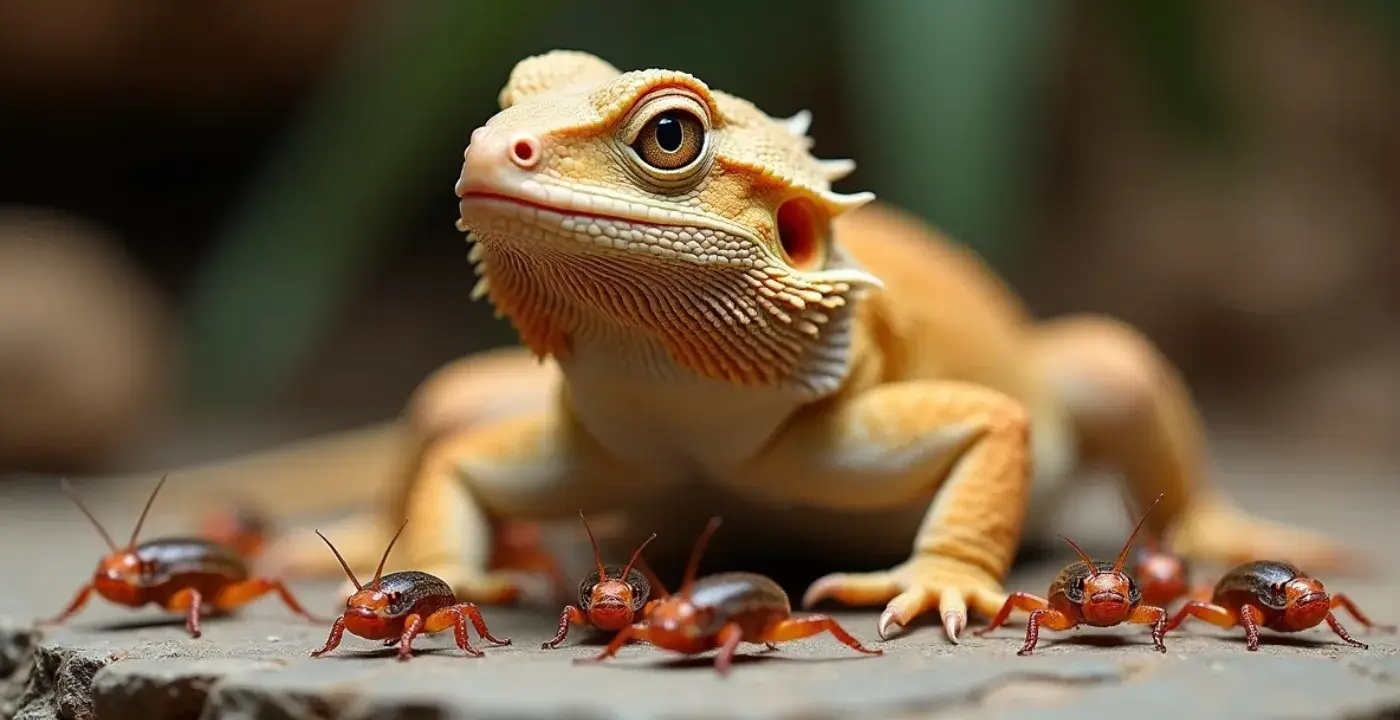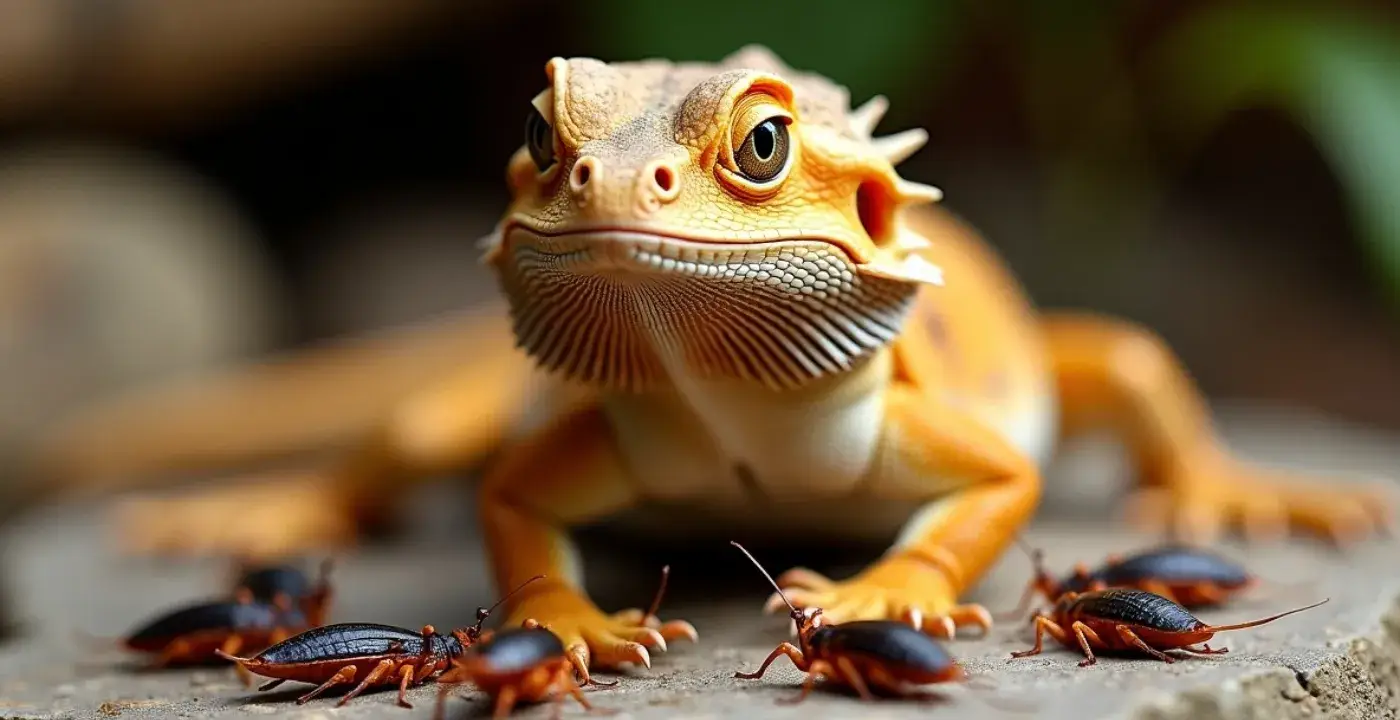If you’re a bearded dragon owner, you know how crucial it is to provide your pet with the right nutrition. One of the most common questions reptile enthusiasts ask is, what size Dubia roaches for juvenile bearded dragons should I feed? Getting the size right is essential for your dragon’s health, growth, and overall well-being. In this comprehensive guide, we’ll dive into everything you need to know about feeding Dubia roaches to juvenile bearded dragons, including sizing, nutritional benefits, and practical tips to ensure your pet thrives.
Why Dubia Roaches Are a Staple for Juvenile Bearded Dragons

Dubia roaches (Blaptica dubia) are a popular feeder insect for reptiles, and for good reason. They are highly nutritious, easy to digest, and less likely to carry parasites compared to other feeder insects like crickets. For juvenile bearded dragons, which are in a critical growth phase, Dubia roaches provide the perfect balance of protein, fat, and essential nutrients.
But here’s the catch: feeding the wrong size Dubia roaches can lead to health issues like impaction or malnutrition. So, how do you determine the right size? Let’s break it down.
Understanding the Nutritional Needs of Juvenile Bearded Dragons
Before we dive into the specifics of Dubia roach sizing, it’s important to understand the dietary requirements of juvenile bearded dragons. Unlike adults, juveniles need a diet that’s high in protein to support their rapid growth. In the wild, young bearded dragons are voracious insectivores, consuming a variety of insects to meet their nutritional needs.
Dubia roaches are an excellent choice because they contain:
- High protein content (around 28%).
- Low fat content (about 7%).
- Rich in calcium, which is vital for bone development.
- Easily digestible, reducing the risk of impaction.
However, the size of the roaches you feed plays a significant role in ensuring your dragon can safely consume and digest them.
What Size Dubia Roaches Should You Feed?
The golden rule for feeding Dubia roaches to juvenile bearded dragons is to ensure the roach is no wider than the space between your dragon’s eyes. This guideline helps prevent choking and digestive issues. Here’s a more detailed breakdown:
Small Dubia Roaches (1/4 inch to 1/2 inch)
- Ideal for very young bearded dragons (under 3 months old).
- These roaches are tiny and easy for hatchlings to consume.
- Feed 20-30 small roaches per day, spread across multiple feedings.
Medium Dubia Roaches (1/2 inch to 3/4 inch)
- Suitable for juvenile bearded dragons aged 3 to 6 months.
- At this stage, your dragon’s appetite will increase, and they’ll need larger prey.
- Feed 10-15 medium roaches per day, adjusting based on your dragon’s appetite.
Large Dubia Roaches (3/4 inch to 1 inch)
- Best for older juveniles (6 months and up) nearing adulthood.
- These roaches provide more substantial meals but should still be smaller than the space between your dragon’s eyes.
- Feed 5-10 large roaches per day, depending on your dragon’s size and activity level.
How to Measure Dubia Roaches for Your Bearded Dragon

Measuring Dubia roaches doesn’t require any special tools. Simply compare the width of the roach to the space between your dragon’s eyes. If the roach is wider than this space, it’s too large and could pose a risk. Here’s a quick step-by-step guide:
- Observe Your Dragon’s Head Size: Take note of the distance between their eyes.
- Select Appropriately Sized Roaches: Use the size guidelines above to choose the right roaches.
- Monitor Feeding Behavior: Ensure your dragon is chewing and swallowing the roaches without difficulty.
Common Mistakes to Avoid When Feeding Dubia Roaches
Even experienced reptile owners can make mistakes when feeding Dubia roaches. Here are some common pitfalls to watch out for:
- Feeding Roaches That Are Too Large: This can cause choking or impaction, a serious condition where the digestive tract becomes blocked.
- Overfeeding or Underfeeding: Juvenile bearded dragons need a balanced diet. Overfeeding can lead to obesity, while underfeeding can stunt growth.
- Ignoring Gut Loading and Supplementation: Dubia roaches should be gut-loaded (fed nutritious foods) and dusted with calcium powder to ensure your dragon gets all the necessary nutrients.
The Benefits of Dubia Roaches Over Other Feeder Insects
While there are several feeder insect options available, Dubia roaches stand out for several reasons:
- Higher Nutritional Value: Compared to crickets, Dubia roaches have more protein and less fat.
- Longer Lifespan: Dubia roaches live longer than crickets, reducing the need for frequent purchases.
- Quiet and Odorless: Unlike crickets, Dubia roaches don’t make noise or produce strong odors.
- Lower Risk of Parasites: Dubia roaches are less likely to carry parasites that can harm your dragon.
How to Store and Care for Dubia Roaches
Proper care of Dubia roaches ensures they remain nutritious and healthy for your bearded dragon. Here’s how to store and maintain them:
- Use a Well-Ventilated Container: A plastic bin with small air holes works well.
- Provide a Warm Environment: Dubia roaches thrive at temperatures between 70°F and 90°F.
- Feed Them Nutritious Foods: Gut-load the roaches with fruits, vegetables, and high-quality roach chow.
- Keep the Container Clean: Remove dead roaches and uneaten food regularly to prevent mold and bacteria growth.
Frequently Asked Questions About Dubia Roaches and Juvenile Bearded Dragons
Can I feed my juvenile bearded dragon only Dubia roaches?
While Dubia roaches are an excellent staple, it’s important to provide a varied diet. Include other insects like crickets, mealworms, and occasional treats like waxworms or hornworms.
How often should I feed Dubia roaches to my juvenile bearded dragon?
Juvenile bearded dragons should be fed 2-3 times a day, with each feeding consisting of an appropriate number of roaches.
Do I need to dust Dubia roaches with supplements?
Yes, dusting Dubia roaches with calcium powder (without vitamin D3) 4-5 times a week and a multivitamin supplement once a week is recommended.
Can Dubia roaches bite my bearded dragon?
Dubia roaches are not aggressive and rarely bite. However, always supervise feedings to ensure your dragon is safe.
Conclusion: Feeding the Right Size Dubia Roaches for a Healthy, Happy Dragon
Feeding your juvenile bearded dragon the right size Dubia roaches is crucial for their growth and health. By following the guidelines in this post, you can ensure your dragon gets the nutrition they need without the risks associated with improper feeding. Remember to measure the roaches, provide a varied diet, and maintain proper care for both your dragon and their feeder insects.
By following this guide, you’ll not only become a more informed reptile owner but also ensure your juvenile bearded dragon thrives during this critical stage of their life. Happy feeding!
Explore our tips on housing and maintaining Dubia roaches Drguidez.

Mark Manson is an expert blogger specializing in Dubia Roaches. He shares practical care tips, breeding insights, and feeding advice to help enthusiasts and reptile owners thrive.

